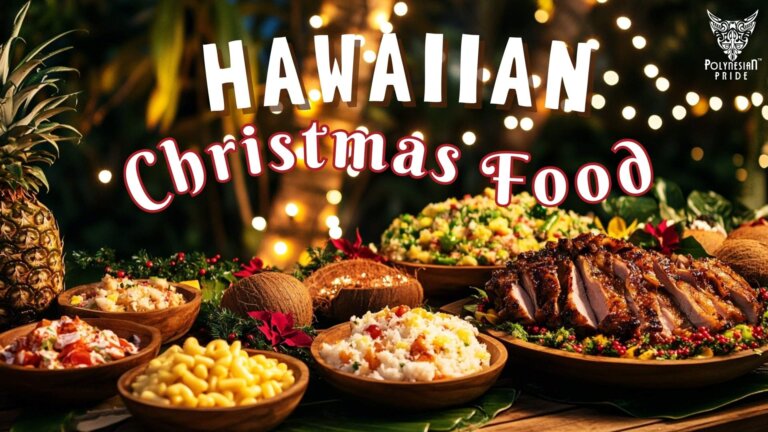Fiji Traditional Clothing: Timeless Beauty and Island Style

Fiji isn’t just about hammocks, coconuts, and overwater bungalows (though let’s be honest, those are fantastic too). It is also a place where Fiji Traditional Clothing carries stories of cultural identity, regional pride, and spiritual meaning.
From the intricate masi cloth to the versatile sulu, every garment is part of something greater.
Let’s take a journey together to explore the vibrant, meaningful world of Fijian traditional wear and understand why clothing here is truly the culture you can wear.
Core Traditional Garments in Fijian Traditional Clothing
What is a Sulu? The Foundation of Traditional Fiji Dress
If you only remember one word from this article, let it be “sulu”. Introduced in the 19th century, it has become the national dress of Fiji. As a cornerstone of Fiji traditional clothing, the sulu is a rectangular piece of cloth wrapped around the waist, worn by both men and women. Its versatility allows it to be adapted for various occasions, from daily wear to formal events. A sulu is worn like a wraparound skirt—very much like a sarong, pareu, or lavalava in other Pacific island traditional dress cultures.

There are several variations:
- Sulu va taga: A casual, unisex sulu, typically adorned with vibrant patterns, ideal for everyday wear.
- Sulu vakataga: A tailored version with pockets, commonly worn by men for formal occasions and as part of official uniforms.
- Sulu jaba: An elegant, full-length sulu for women, often paired with a matching blouse, suitable for church services and formal gatherings.
Whether you’re heading to the market in Suva or attending a chief’s installation in a remote village, a sulu—an essential piece of Fijian traditional costume—is always appropriate if styled right.
The Chamba – Traditional Dress of Fiji for Women
Let’s talk about the chamba, a dress that captures the rhythm of island life. Flowing to the ankles and often adorned with bold tropical prints, the chamba is a staple in the wardrobe of many Fijian women. It’s light and breezy and designed to keep you comfortable in Fiji’s warm, humid climate.
Beyond its beauty, this piece of Fijian cultural clothing carries a deeper meaning. In villages and during formal gatherings, wearing a chamba reflects respect, modesty, and the island’s strong Christian influence. The vibrant colors and patterns are more than just fashion—they’re expressions of joy, heritage, and community pride.
On a Sunday morning in a Fijian village, you’ll often see women dressed in their finest chambas, each one unique but woven together by a shared sense of tradition and grace.

The Bula Shirt – A Staple in Fiji Traditional Costume for Men
The bula shirt is Fiji’s answer to casual elegance. With its vivid colors and bold patterns inspired by nature, it’s a statement piece that fits right into both everyday life and special occasions.
These short-sleeved, collared shirts are a favorite among Fijian men. You’ll see them at church, family events, and even business settings. They’re comfortable, eye-catching, and full of character. When paired with a pocket sulu, the outfit becomes a perfect example of Fiji traditional clothing adapted to modern sensibilities.
The bula shirt isn’t just clothing. It represents island identity and national pride, all while keeping you cool under the tropical sun.
Symbolism and Cultural Meaning in Fijian Clothing
Masi Patterns and Their Sacred Symbols
Every piece of masi cloth in Fiji tells a story. Its hand-painted symbols are more than decoration — they carry deep spiritual and cultural meanings passed down through generations.
- Triangles often stand for shark teeth, a symbol of protection and strength.
- Circles and spirals represent the cycle of life, the sun, and a connection to divine forces.
- Chevron shapes mimic the waves of the ocean, honoring Fiji’s deep relationship with the sea.
These sacred motifs aren’t chosen for style. They reflect family lineage, tribal identity, and social rank. Some are considered sacred, reserved only for chiefs or spiritual figures, and worn during Fijian ceremonial clothing traditions. Wearing these designs without proper context is seen as disrespectful.

According to UNESCO’s Intangible Cultural Heritage in Fiji, the country actively preserves its cultural practices, such as traditional clothing, dances, and rituals, through everyday community life.
Garments like the sulu and masi are not just worn; they’re living traditions passed down across generations.
Natural Materials and Cultural Craftsmanship
Traditional attire in Fiji is crafted from materials that reflect a deep connection to the land. Fiji indigenous clothing often uses:
- Pandanus and coconut leaves: Woven into skirts, mats, and accessories.
- Natural dyes: Extracted from local plants to color masi and other fabrics.
The craftsmanship involved in creating these garments is often passed down through generations, preserving the cultural heritage and artisanal skills of the Fijian people.
Evolution of Fijian Clothing
Before modern fabrics arrived, Fiji traditional clothing was simpler but rich with cultural significance. Men wore loincloths, while women wore grass skirts, often styled according to age and marital status. Chiefs and high-ranking women displayed tattoos, elaborate masi, and ceremonial beadwork — all symbolic in their own right.
Over time, influences from missionaries, colonization, and neighboring Pacific cultures blended with local customs. Today, Fijian traditional wear represents a vibrant mix of Melanesian, Polynesian, and Indian styles—a dynamic, living identity in fabric form.
When and How to Wear Traditional Clothing in Fiji
Casual Life in Cities

In urban centers like Suva, the Fijian dress code blends modern convenience with cultural pride. While many people wear Western-style clothes like shorts and t-shirts, traditional elements like light cotton sulus and even bula shirts remain popular for both style and practicality.
You’ll often see men in casual Fijian traditional attire—a vibrant sulu paired with a simple collared shirt. Women may wear light chamba dresses with floral patterns, reflecting both climate comfort and cultural heritage. Sun hats are acceptable in cities but less so in villages.
But remember, beachwear belongs on the beach. Walking into a village in a bikini top? Big no-no.
In the Villages – Respect Comes First
In more traditional villages, the traditional dress of Fiji is not optional — it’s expected. Men and women wear longer sulus, cover their shoulders, and dress modestly to show respect. Visitors are encouraged to follow suit.
Here are a few cultural clothing cues:
- Remove shoes before entering homes.
- Avoid wearing hats in front of the chief.
- Beachwear should stay at the beach.

According to Tourism Fiji, visitors are expected to dress modestly as a sign of cultural respect. Women, in particular, should cover their shoulders and wear a sulu (sarong) when entering village spaces. Following these customs helps build trust and shows genuine appreciation for the local way of life. If you’re unsure how to wear Fiji traditional clothing correctly in the villages, always ask your hosts or follow their example.
In Weddings and Village Ceremonies

Weddings and ceremonies are where Fiji traditional clothing truly shines. They’re also a visual feast for anyone fascinated by the diversity of Pacific Island traditional dress.
- iTaukei (Indigenous Fijian) Weddings: Brides often wear a white gown with a masi overlay, while grooms wear formal sulus, masi vests, and headbands.
- Indo-Fijian Weddings: Expect colorful sarees, sherwanis, and sparkling jewelry, blending Indian elegance with island flavor.
- Village Ceremonies: Layered masi, body painting, salusalu (flower garlands), and woven mats transform everyday attire into symbols of celebration and unity.
Sacred Ritual Dress in Fiji: Funerals, Kava, and Agriculture
Beyond weddings and dances, Fiji traditional clothing plays a key role in more solemn or spiritual events.
Take funerals, for example. In many villages, mourners wear plain or faded masi, often without patterns, as a sign of humility and grief. Relatives may be draped in unadorned tapas and go barefoot to express respect for the deceased.
During Yaqona (kava) ceremonies or chief installations, attire becomes even more symbolic. Men wear layered masi skirts tied with braided fiber cords, while women may carry woven mats or decorated fans as part of the ritual.
In agricultural celebrations—like the start of the yam planting season—people dress in leafy accessories, green sulus, and floral headbands, celebrating harmony with nature and ancestral blessings for the harvest.
Traditional Dance Costumes in Fiji’s Meke Performance
Meke is a performance art form in which traditional Fijian clothing is transformed into motion. Through grass skirts, headpieces, and painted masi, stories of ancestors and island legends come alive.
- Grass skirts: Often made from hibiscus or pandanus fibers.
- Masi wraps: Decorated with symbolic motifs.
- Headpieces: Adorned with feathers or flowers.
- Accessories: Including beads, shells, and body paint.
The ensemble isn’t just eye-catching — it brings legends to life, keeping Fijian cultural stories alive through motion, rhythm, and dress.

Why the Clothing Works?
Fiji is tropical, hot, humid, and often rainy. Traditional attire in Fiji isn’t just about cultural symbolism. It’s innovative, practical, and beautifully adapted to the island lifestyle.
Here’s why Fiji traditional clothing works so well:
- Lightweight sulus dry quickly after rain or sea spray.
- Flip-flops or barefoot walking are both practical and part of everyday island life.
- Bula shirts are loose and airy, helping you stay cool while maintaining a polished look.
- Chambas and sulus provide airflow while offering full coverage, respecting both climate and culture.
In essence, Fijians traditionally wear bridges in form and function. These garments are designed not only for ceremonies but also for comfort, movement, and sustainability. That’s why they remain as relevant today as ever.
Modern Takes on Fiji Traditional Clothing
Today, Fiji traditional clothing continues to inspire modern fashion. Our collection brings these timeless styles into everyday life. We feature Bula shirts, island-inspired Polo shirts, the graceful Puletasi dress, and matching Hawaiian shirt and dress sets that celebrate cultural connection.
Whether you are traveling, dressing casually, or attending a special occasion, our designs let you carry a piece of Fiji’s tradition stylishly and comfortably.
🌴 Bring island culture to your closet — Explore the Fiji Collection today. 🌺
Conclusion: Culture You Can Wear
Fiji traditional clothing is more than a visual delight. It’s a cultural heartbeat woven into everyday life. From the practicality of a sulu to the sacred storytelling of masi, each piece of clothing carries pride, meaning, and legacy.
Whether you’re watching a meke, attending a village celebration, or just strolling through Nadi market, what people wear in Fiji tells you more than words ever could. It tells you about ancestry, respect, spirituality, and a sense of belonging.
So the next time you admire or wear a piece of Fiji traditional clothing, remember—you’re not just wrapped in fabric. You’re wrapped in generations of heritage, pride, and island spirit.
FAQs About Fiji Traditional Clothing
What is the traditional clothing in Fiji?
Traditional Fijian clothing includes the sulu, a wraparound skirt worn by both men and women. It’s often paired with a blouse or shirt, and made from cotton or masi (barkcloth) for ceremonies.
What is Fijian clothing called?
A sulu is a kilt-like garment worn by men and women in Fiji since colonisation in the nineteenth century.
What do locals wear in Fiji?
Locals in Fiji commonly wear sulus for both casual and formal occasions. Men pair it with shirts, while women often wear floral dresses or sulu jaba sets. It’s all about comfort and culture.
What are the traditional colors of Fiji?
The colours are normally an earthy beige, black, or brown, with dyes used from the mangrove tree. Now, some modern materials are used, such as coloured yarn to make frilled edges. The exchanging of mats has been a common practice in all forms of Fijian ceremony from ancient times.

I am a cultural historian and editor with over 10 years of research into pre-contact Polynesian history, the Lapita migration, and oral traditions. Share the excitement of my latest publications.
My contact:
Email: [email protected]
Tel: +64 21 456 7890















